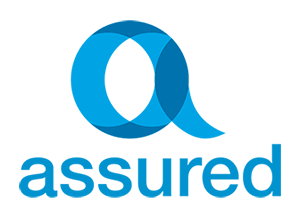Serviceability is key to an affordable home loan

When you’re looking for a new home loan, the question is not, ‘How much can I borrow?’
Instead you should be asking, ‘How much can I afford to repay?’
This key factor is one of the ways lenders work out the size of your loan, and it’s called ‘serviceability.’
If you’re thinking of getting a new home loan, you’ve probably jumped online, begun some research and maybe even plugged a few numbers into an online calculator.
Online calculators are very general and only give an indicative picture.
If you put in your income, the amount you can borrow, according to the calculator, could be a lot larger than the amount a lender is willing to approve.
Any lender will look at a lot more than simply how much money you bring home each month.
Among other things, they also look at how much leaves your pocket in living expenses.
This helps them work out what you have left over from your current commitments to be able to service your loan.
It’s all part of the emphasis on responsible lending and in the long run, while you may not be able to borrow as much as you hoped, you won’t have a loan that’s too big of a financial commitment and stops you from living a good life – going on holidays, affording a new car, or buying that antique teapot you’ve always wanted.
Income vs Expenses
A lender will consider your income from a variety of regular sources like salary, investments or rental income.
In turn, they’ll look at your outgoing costs like food, electricity, water, insurances, phones, entertainment subscriptions, other day-to-day costs, and any other ongoing debt repayments like other loans and credit cards.
From this, they’ll work out how much you’ll have left to cover the repayments.
Based on this number you may not be able to borrow as much as you thought.
But this isn’t everything the lender looks at.
Other factors influence the amount you can borrow and your serviceability.
What else do banks take into consideration?
1. Loan to value ratio (LVR)
Loan to value ratio is just a more formal way of saying how big your deposit is compared to how much you want to borrow for your new home.
The LVR is the mortgage amount, divided by the price you’ll pay for the home.
Let’s say you have a $60,000 deposit saved.
If the home is valued at $600,000 you’ll have a $540,000 mortgage.
That’s an LVR of 90 per cent.
Generally lenders are looking for an LVR of 80 per cent or lower.
Anything higher and you may need lenders’ mortgage insurance, or LMI.
This is to protect the bank from the risk of taking on your debt and will add to your expenses. It will also be considered when assessing your serviceability.
2. Debt to income ratio (DTI)
Your debt to income ratio is another way a lender will calculate your ability to service a loan.
Your DTI is a simple way to put a number to this, and they use this number as a basic guide to see how much you can afford to repay without putting you under unnecessary financial stress.
Your DTI ratio is your total debts divided by your combined income (before tax).
A lender will look at your current debts like credit cards, personal loans, and any other repayments, and add the amount you want to borrow.
They’ll divide this with your total income to work out your ratio.
For example, if you have current debt of $15,000 and want a $500,000 mortgage, your total debt is $515,000.
Divide this by your combined total income of $150,000, and your DTI = 3.43.
Most lenders would consider this a pretty good risk. A loan of even four or five times your income is a good ballpark figure.
3. Not all income is the same
You may have more than one source of income, all of which the banks will consider in your loan amount.
But not all incomes are given the same weight as others.
Your take-home pay is still their main focus because it’s a known value, ongoing and dependable.
Income from investments and rentals are also good, however, a lender may only allow around 80 per cent of this income, to allow for fluctuations in the share market or periods when a rental property may be vacant.
4. Interest rate buffers
When you apply for a home loan, banks don’t simply assess your borrowing capacity based on the actual rate you receive as a client.
They will assess you at a higher “floor rate” as a way of ensuring your ability to make loan repayments if interest rates were to suddenly rise.
Think of it as an earthquake test for your financial situation.
This can have a serious impact on your ability to borrow the amount you need and not all lenders apply the same serviceability rules.
When assessing your ability to afford your home loan repayments, most lenders will also add an extra buffer known as a benchmark assessment rate or floor rate.
This will typically be 1 – 1.5% above the bank’s standard variable rate and it’s applied when assessing a customer’s income and liability position for serviceability.
You may apply for a loan with a 3.5 per cent rate, but a lender will calculate your ability to make repayments on a loan of 6 per cent. It’s a good idea as it protects you and them from a rise in rates.
5. Cancel your credit cards
A lender will look at your current debts to determine serviceability.
To improve yours you should consider cancelling a credit card rather than paying it back to zero.
Even if your $5,000 card is all clear, lenders look at it as a $5,000 debt you could instantly rack up and will need to make regular payments to.
6. Don’t forget stamp duty
Stamp duty is a necessary cost whenever you buy property, so you need to keep this in reserve when considering how much you have for a deposit.
So, where do you stand?
As you can see, there are lots of factors lenders consider when trying to determine your loan amount.
Serviceability is one of the most important ones but it’s essential you get an accurate picture of where you stand before approaching lenders and even knowing your realistic budget when you start looking at properties.
Online calculators can help but, as always, it’s best to speak to a broker. Brokers should know exactly what lenders are looking for and which lenders will be the right fit for your individual circumstances.
Source: The Real Estate Conversation 12th September 2019 https://www.therealestateconversation.com.au/blog/ruan-burger/serviceability-key-affordable-home-loan/ruan-burger-blog/home-loan-serviceability



